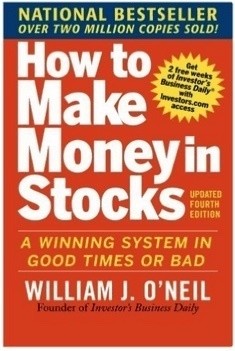Can You Learn Trading By Yourself? Absolutely! Learning to trade independently is achievable and can be quite rewarding. LEARNS.EDU.VN offers the resources and guidance you need to navigate the financial markets successfully. With dedication and the right approach, you can develop the skills necessary for informed trading decisions and financial independence.
1. Understanding the Basics of Stock Trading
Stock trading involves buying and selling shares of publicly traded companies, and understanding the basics is crucial for success. To elaborate on this fundamental definition, we can explore the mechanics of the stock market and the factors that influence stock prices.
1.1 Defining Stock Trading
Stock trading, or equity trading, is the process of buying and selling shares of publicly traded companies. Popular examples include Apple (AAPL), META (META), Disney (DIS), Microsoft (MSFT), Amazon (AMZN), Google (GOOGL), and Netflix (NFLX). These companies allow individuals to own a portion of their business through stock ownership.
1.2 Supply and Demand
Like any market, stock prices are determined by supply and demand. Every trade requires a buyer and a seller. When you buy shares, someone is selling them to you, and vice versa. Prices fluctuate based on the balance between buyers and sellers.
1.3 Factors Influencing Stock Prices
Stock prices are not static; they change constantly due to various factors:
- Company Performance: Positive financial results (e.g., increased revenue, profitability) can drive demand and increase the stock price. Conversely, poor performance can lead to decreased demand and lower prices.
- Economic Conditions: Overall economic health influences stock prices. A strong economy typically boosts stock values, while a recession can cause them to decline.
- Industry Trends: The performance of the industry a company belongs to can impact its stock. For instance, a booming tech industry might benefit tech stocks.
- News and Events: Major news events, such as product launches, mergers, or regulatory changes, can cause significant price movements.
- Investor Sentiment: The overall mood and expectations of investors play a role. Positive sentiment can drive prices up, while fear and uncertainty can cause them to fall.
1.4 Trading Platforms
To participate in stock trading, you need access to a trading platform provided by a brokerage firm. These platforms allow you to place orders to buy and sell stocks, monitor market conditions, and manage your investment portfolio.
1.5 Risk Management
Understanding and managing risk is paramount. The stock market can be volatile, and there is always a risk of losing money. Effective risk management involves setting stop-loss orders, diversifying your portfolio, and not investing more than you can afford to lose.
By grasping these basic principles, you can approach stock trading with a solid foundation, increasing your chances of making informed and profitable decisions. For further resources and in-depth learning, visit LEARNS.EDU.VN.
2. Ten Steps to Self-Taught Trading Success
Learning to trade on your own is achievable with the right approach and resources. To learn about becoming a successful, self-taught trader, explore these ten critical steps, which integrate advice from industry experts and insights from LEARNS.EDU.VN.
2.1 Open a Brokerage Account
To begin trading stocks, you need an online broker. According to a 2024 survey by BrokerageReview.com, online brokers such as Fidelity, Schwab, E*TRADE, and Merrill Edge provide user-friendly platforms with extensive educational resources for beginners. When choosing a broker, consider factors such as:
- Fees: Look for low or no commission fees to minimize trading costs.
- Platform Features: Ensure the platform offers tools for research, charting, and analysis.
- Educational Resources: Access to webinars, tutorials, and articles can significantly aid your learning process.
2.2 Casually Monitor the Stock Market
Regularly follow reputable news sites such as MarketWatch and The Wall Street Journal. According to a 2023 study by the Pew Research Center, staying informed about economic trends and market analysis is crucial for making informed trading decisions. Some useful strategies include:
- Daily Check-ins: Dedicate 15-30 minutes each day to read market headlines and analysis.
- Stock Quotes: Use Yahoo Finance or Google Finance to monitor stock charts, news, and fundamental data.
- Financial TV: Watch CNBC or Bloomberg to familiarize yourself with market discussions and terminology.
2.3 Seek Guidance from Mentors or Peers
Find a mentor or a study partner who understands the stock market. A 2022 report by the National Bureau of Economic Research found that mentored individuals are more likely to succeed in financial endeavors. A mentor can:
- Answer Questions: Provide clarity on complex topics.
- Offer Resources: Recommend valuable learning materials.
- Provide Encouragement: Help maintain motivation during challenging times.
2.4 Study Successful Investors
Learn about legendary investors like Warren Buffett, Jesse Livermore, and Benjamin Graham. Their strategies and philosophies can provide valuable insights. For instance, Warren Buffett’s emphasis on value investing and long-term holding periods is a cornerstone of successful investing.
2.5 Read Books on Stock Trading
Books offer a wealth of knowledge at a fraction of the cost of courses or seminars. Some highly recommended books include:
- “The Intelligent Investor” by Benjamin Graham: A classic guide to value investing.
- “How to Make Money in Stocks” by William O’Neil: Focuses on the CANSLIM trading strategy.
- “Reminiscences of a Stock Operator” by Edwin Lefevre: A fictionalized biography of Jesse Livermore, offering timeless trading lessons.
2.6 Utilize Articles and Podcasts
Explore educational websites and listen to finance-related podcasts. LEARNS.EDU.VN provides numerous articles and resources for beginner investors.
2.7 Evaluate Paid Subscriptions Critically
Exercise caution when considering paid subscription services. While some can offer valuable insights, many are scams. Reputable subscriptions include Investor’s Business Daily and The Wall Street Journal. Avoid services that promise guaranteed returns or insider information, as these are often misleading.
2.8 Explore Seminars, Online Courses, or Live Classes Carefully
Approach seminars and courses with skepticism. Free seminars can be beneficial but often lead to high-pressure sales pitches. If considering paid courses, research the instructor’s credentials and read reviews to ensure the course provides genuine value.
2.9 Buy Your First Shares or Practice with a Simulator
Start trading with a small amount of capital or use a stock simulator to practice. Brokers like E*TRADE, Webull, and TradeStation offer paper trading accounts. A practical approach to trading is to:
- Start Small: Invest in a few shares to gain hands-on experience.
- Use Stop-Loss Orders: Limit potential losses on each trade.
- Analyze Results: Review your trades to identify patterns and areas for improvement.
2.10 Follow Warren Buffett’s Advice: Buy and Hold
Consider adopting a buy-and-hold strategy, investing in diversified index funds for long-term growth. A 2021 study by Morningstar found that passive investing in index funds often outperforms active trading strategies over extended periods.
By following these steps and continually seeking knowledge, you can learn to trade stocks effectively on your own. Visit LEARNS.EDU.VN for more detailed guides and resources.
3. Key Trading Strategies for Self-Learners
There are several effective trading strategies for self-learners to enhance their skills. To learn about diverse approaches, here’s a detailed breakdown of popular methods, emphasizing the benefits and potential drawbacks of each.
3.1 Buy and Hold
The buy and hold strategy involves purchasing stocks and holding them for an extended period, often years or even decades. This strategy is based on the belief that the market will appreciate over time, and it minimizes the need for frequent trading. According to a 2022 report by Fidelity, long-term buy-and-hold investors tend to outperform those who frequently trade in and out of the market. Key benefits include:
- Reduced Trading Costs: Less frequent trading means lower commission fees.
- Tax Efficiency: Holding investments for longer than a year qualifies for lower long-term capital gains tax rates.
- Simplicity: Requires less time and effort compared to active trading strategies.
3.2 Day Trading
Day trading involves buying and selling stocks within the same day, aiming to profit from small price movements. This strategy requires a high level of skill, discipline, and real-time monitoring of the market. A study by the University of California, Berkeley, found that the majority of day traders do not consistently profit, and many lose money.
3.3 Swing Trading
Swing trading is an intermediate-term strategy that involves holding stocks for a few days to several weeks, capitalizing on price swings. Swing traders use technical analysis to identify potential entry and exit points. A key advantage of swing trading is:
- Flexibility: Allows traders to profit from both rising and falling markets.
- Reduced Overnight Risk: Positions are typically closed before the market closes, reducing exposure to overnight news and events.
3.4 Momentum Trading
Momentum trading involves buying stocks that are showing strong upward trends and selling them when the trend weakens. This strategy is based on the idea that stocks that have been performing well will continue to do so in the short term. However, momentum trading can be risky, as trends can reverse quickly.
3.5 Penny Stock Trading
Penny stock trading involves buying shares of small companies that trade for less than $5 per share. While penny stocks can offer the potential for high returns, they are also extremely risky due to their volatility and lack of liquidity.
3.6 ETFs and Mutual Funds
Exchange-Traded Funds (ETFs) and mutual funds are investment vehicles that hold a collection of stocks or bonds. These funds offer instant diversification and can be a good option for beginners. According to a 2023 report by the Investment Company Institute, ETFs and mutual funds have become increasingly popular among retail investors due to their simplicity and diversification benefits.
By understanding these different trading strategies, self-learners can choose the approach that best suits their risk tolerance, time commitment, and financial goals. For more in-depth information and educational resources, visit LEARNS.EDU.VN.
4. Learning from Famous Stock Traders
Studying the wisdom and strategies of famous stock traders can provide invaluable insights for self-learners. Here’s how key figures like William O’Neil, Jesse Livermore, and John Paulson approach the market, offering lessons that can guide your trading journey.
4.1 William O’Neil
William O’Neil is the founder of Investor’s Business Daily and the creator of the CAN SLIM investment strategy. His approach focuses on identifying growth stocks with strong earnings and sales growth. According to O’Neil, persistence and discipline are key to success. His notable tips include:
- Be Prepared for Small Losses: Accept that losses are part of the learning process.
- Focus on High-Quality Stocks: Concentrate on a few leading stocks rather than spreading investments too thinly.
- Avoid Emotional Involvement: Follow a strict set of buying and selling rules to avoid emotional decisions.
- Analyze Trades: Conduct post-trade analysis to learn from both successes and mistakes.
- Buy High and Sell Higher: Focus on stocks that are already showing strength rather than trying to find bargains.
4.2 Jesse Livermore
Jesse Livermore, one of the greatest stock traders of all time, emphasized the importance of discipline and risk management. Despite experiencing both great wealth and devastating losses, his lessons remain relevant today. According to biographer Richard Smitten, Livermore’s key principles include:
- Cut Losses Quickly: Limit losses to protect capital.
- Confirm Judgments: Ensure decisions are well-reasoned before committing fully.
- Watch Leading Stocks: Focus on stocks that are showing the strongest performance.
- Let Profits Ride: Allow profitable trades to continue until price action indicates a change.
- Buy New Highs: Consider buying stocks as they reach new all-time highs.
- Use Pivot Points: Identify key levels to determine trends.
- Control Emotions: Manage emotions to avoid impulsive decisions.
4.3 John Paulson
John Paulson, a hedge fund manager, is renowned for his successful bet against the housing market in 2007-2009. His insights into market analysis and risk assessment are highly valuable. According to Paulson, his lessons include:
- Be Skeptical: Don’t blindly trust experts; do your own research.
- Have an Exit Strategy: Always plan how to exit a trade.
- Monitor Debt Markets: Debt markets can provide early warnings of financial problems.
- Educate Yourself: Stay informed about new investment vehicles.
- Use Insurance: Consider options to protect against losses.
- Value Experience: Learn from past successes and failures.
- Avoid Emotional Attachment: Don’t become emotionally attached to any investment.
- Diversify Risk: Don’t risk too much on a single trade.
By studying these famous traders, self-learners can gain insights into different trading styles and risk management techniques. For more detailed analysis and educational resources, visit LEARNS.EDU.VN.
5. Essential Tips for Self-Taught Traders
For those embarking on a self-directed trading journey, understanding essential tips can significantly improve your success rate. Having completed over a thousand stock trades involving more than 4,000 individual transactions, here are valuable tips that are beneficial to know from the beginning:
-
Adopt a Win-Win Mindset: Trading psychology is crucial. If you’re unsure whether to hold shares for higher prices or sell to secure a profit, consider selling half and holding the remainder with a stop loss at your original buy price. This way, you win whether the stock drops or continues to rise.
-
Establish Strict Rules: Implement and adhere to strict trading rules to maintain discipline.
Rule Description Set Stop-Loss Orders Automatically sell a stock if it drops to a certain price, limiting potential losses. Define Profit Targets Set a target price at which you will sell a stock to realize profits. Limit Capital Per Trade Never risk more than a predetermined percentage of your trading capital on a single trade (e.g., 1-2%). Avoid Trading on Emotion Make decisions based on analysis and strategy, not fear or greed. Review and Adjust Strategies Regularly assess your trading performance and adjust strategies as needed based on market conditions and personal experience. 





-
Stay Informed About Earnings: Always know the day and time when your stock holdings are scheduled to post earnings. Earnings announcements can significantly impact stock prices, so being prepared is essential.
By incorporating these tips into your trading strategy, you can navigate the stock market with greater confidence and increase your chances of success. For additional resources and expert guidance, visit LEARNS.EDU.VN.
6. Debunking Myths About Self-Learning Trading
There are several misconceptions about self-learning trading. Here are some common myths debunked to provide a clearer understanding of what it takes to succeed:
Myth #1: You Need a Teacher to Learn Trading
Reality: While mentors can be helpful, they are not essential. You can learn through books, online resources, and practical experience.
Myth #2: Trading is Easy to Learn
Reality: Trading requires time, effort, and dedication. Success depends on your ability to analyze information, choose appropriate strategies, and stay curious.
Myth #3: You Need a Lot of Money to Start Trading
Reality: You can start with a small amount, especially with brokers offering fractional shares. The key is to focus on learning and managing risk, not the size of your initial investment.
Myth #4: Trading is a Quick Way to Get Rich
Reality: Trading involves risk, and quick riches are unlikely. Consistent profits come from disciplined trading, continuous learning, and effective risk management.
Myth #5: All Paid Trading Courses are Worthwhile
Reality: Many paid courses are scams or provide outdated information. Thoroughly research the instructor and read reviews before investing in a course.
By dispelling these myths, self-learners can approach trading with realistic expectations and a solid understanding of the challenges and opportunities involved. For more resources and guidance, visit LEARNS.EDU.VN.
7. Free Ways to Learn Stock Trading Independently
The best free way to learn stock trading is to use a virtual portfolio, also known as “paper trading.” This allows you to understand market dynamics without risking actual money. To learn about the free ways to master stock trading, here’s an exploration of effective methods, combining expert insights with resources available on LEARNS.EDU.VN:
-
Open a Broker Account and Use Paper Trading:
- Many online brokers, such as TD Ameritrade, E*TRADE, and Webull, offer paper trading accounts.
- These accounts simulate real market conditions, allowing you to buy and sell stocks without using real money.
- Paper trading helps you familiarize yourself with the trading platform, test strategies, and track your performance.
-
Follow Stocks and Financial News:
- Monitor individual stocks and financial news to understand market fluctuations.
- Use reputable news sources such as Yahoo Finance, Google Finance, and MarketWatch.
- Pay attention to economic indicators, company earnings, and industry trends.
-
Ask “Why” and Research:
- Whenever you observe something you don’t understand, research it.
- Use online resources, such as Investopedia and the Securities and Exchange Commission (SEC) website, to learn about financial concepts and regulations.
- Question assumptions and seek to understand the underlying reasons for market movements.
By utilizing these free resources and maintaining a proactive approach, you can build a solid foundation in stock trading. LEARNS.EDU.VN offers additional articles, tutorials, and resources to support your learning journey.
8. Starting Small: Trading Stocks with Limited Capital
You can start trading stocks with $100 or less, thanks to brokers offering fractional shares. Several reputable brokers provide this option, allowing you to buy a portion of a share, making it easier for beginners to enter the market.
-
Benefits of Fractional Shares:
- Accessibility: Allows you to invest in high-priced stocks with a small amount of capital.
- Diversification: Enables you to diversify your portfolio even with limited funds.
- Learning Opportunity: Provides a practical way to learn about trading without significant financial risk.
-
Brokers Offering Fractional Shares:
- Fidelity
- Charles Schwab
- Webull
- Robinhood
-
Example:
- If a stock is priced at $300 per share, you can buy 1/10 of a share for $30.
Starting small allows you to gain experience and build confidence without exposing yourself to substantial losses. As you become more comfortable, you can gradually increase your investment amount. For more information on brokers offering fractional shares and tips for beginner traders, visit LEARNS.EDU.VN.
9. Choosing the Right Trading Platform for Beginners
Fidelity stands out as an excellent stock trading site for beginners, providing a combination of user-friendly tools, educational resources, and practical features.
9.1 Key Features of Fidelity:
- User-Friendly Interface: The platform is designed for ease of use, making it simple for beginners to navigate and execute trades.
- Educational Resources: Fidelity offers a wide range of educational materials, including articles, videos, and webinars, to help beginners learn about trading.
- Fractional Shares: Fidelity allows you to buy fractional shares, enabling you to invest in high-priced stocks with a small amount of capital.
- Fidelity Youth App: This unique app is designed for teenagers, providing a safe and educational way to learn about investing.
- Research Tools: Fidelity provides access to comprehensive research and analysis tools to help you make informed trading decisions.
- Customer Support: Fidelity offers excellent customer support, ensuring that beginners can get help when they need it.
9.2 Other Notable Platforms
- TD Ameritrade: Known for its extensive educational resources and powerful trading tools.
- Charles Schwab: Offers a user-friendly platform and a wide range of investment options.
- Webull: A mobile-first platform with commission-free trading and fractional shares.
Choosing the right trading platform is essential for a positive learning experience. Consider factors such as ease of use, educational resources, and available tools. For detailed reviews and comparisons of trading platforms, visit LEARNS.EDU.VN.
10. Realistic Expectations: Getting Rich Through Stock Trading
While it is possible to get rich by trading stocks, it is more likely that you will accumulate wealth by patiently holding a diversified portfolio of quality stocks over the long term. There is no shortcut to wealth accumulation.
10.1 Understanding the Risks
Trading stocks involves risk, and it is essential to approach it with realistic expectations. Many traders lose money, especially when engaging in high-risk strategies like day trading. A study by the North American Securities Administrators Association (NASAA) found that the majority of day traders do not consistently profit.
10.2 Long-Term Investing
Long-term investing, also known as buy-and-hold, is a more reliable strategy for building wealth. This approach involves investing in a diversified portfolio of stocks and holding them for years or even decades. According to a 2021 report by the Investment Company Institute, long-term investors tend to outperform short-term traders.
10.3 Key Principles for Long-Term Investing:
- Diversification: Spread your investments across different stocks and asset classes to reduce risk.
- Patience: Stay invested through market ups and downs.
- Consistency: Regularly contribute to your investment portfolio.
- Quality Stocks: Focus on companies with strong fundamentals and growth potential.
10.4 Avoiding Short-Term Trading
Short-term trading strategies like day trading are often risky and can lead to significant losses. These strategies require constant monitoring and quick decision-making, which can be stressful and time-consuming.
By focusing on long-term investing and avoiding risky short-term trading strategies, you can increase your chances of building wealth over time. LEARNS.EDU.VN provides resources and guidance to help you develop a successful long-term investment strategy.
11. Conclusion: Embracing the Lifelong Journey of Investing
Investing is a lifelong journey, and it’s crucial to approach it with patience, discipline, and a commitment to continuous learning. Start with a small amount, keep it simple, and learn from every trade you make. Remember, building wealth takes time and effort, and there are no shortcuts to success.
If you find yourself becoming emotionally charged with trading, consider passively investing in the overall market with a simple index fund. This approach can provide steady returns without the stress and risk of active trading.
Whether you choose to actively trade or passively invest, remember to stay informed, manage your risk, and seek guidance from reputable sources. LEARNS.EDU.VN is here to support you on your investing journey, providing the resources and expertise you need to achieve your financial goals.
FAQ: Your Questions About Self-Learning Trading Answered
1. Is it possible to learn trading by myself?
Yes, it is entirely possible to learn trading on your own. With access to numerous online resources, books, and paper trading accounts, you can acquire the necessary knowledge and skills to trade successfully.
2. What are the essential steps for self-taught trading?
The essential steps include opening a brokerage account, monitoring the stock market, seeking guidance from mentors, studying successful investors, reading books, utilizing online resources, evaluating paid subscriptions critically, exploring seminars carefully, practicing with a simulator, and considering a buy-and-hold strategy.
3. What strategies can self-learners use to improve their trading skills?
Self-learners can use strategies such as buy-and-hold, day trading, swing trading, momentum trading, and penny stock trading. It’s important to choose a strategy that aligns with your risk tolerance, time commitment, and financial goals.
4. What tips can successful traders offer to self-learners?
Successful traders emphasize the importance of adopting a win-win mindset, establishing strict rules, and staying informed about earnings announcements. Discipline, patience, and continuous learning are also crucial.
5. What are common myths about self-learning trading?
Common myths include the necessity of a teacher, the ease of learning trading, the need for a lot of money to start, the idea that trading is a quick way to get rich, and the assumption that all paid trading courses are worthwhile.
6. How can I learn stock trading for free?
You can learn stock trading for free by using paper trading accounts, following stocks and financial news, and researching any concepts you don’t understand.
7. Can I start trading with $100?
Yes, you can start trading with $100 or less, thanks to brokers offering fractional shares. This allows you to invest in high-priced stocks with a small amount of capital.
8. Which trading platform is best for beginners?
Fidelity is an excellent trading platform for beginners, offering a user-friendly interface, educational resources, fractional shares, and a dedicated youth app.
9. Is it realistic to expect to get rich through stock trading?
While it is possible to get rich by trading stocks, it is more likely that you will accumulate wealth by patiently holding a diversified portfolio of quality stocks over the long term.
10. Where can I find resources and guidance for my trading journey?
You can find resources and guidance on LEARNS.EDU.VN, which offers articles, tutorials, expert analysis, and a supportive community to help you succeed in the stock market.
Remember, the journey to becoming a successful trader is a marathon, not a sprint. Stay patient, stay curious, and never stop learning.
Visit LEARNS.EDU.VN for more information and resources.
Address: 123 Education Way, Learnville, CA 90210, United States
WhatsApp: +1 555-555-1212
Website: learns.edu.vn
